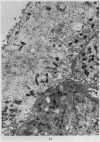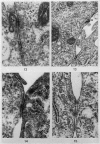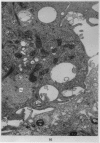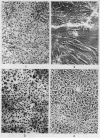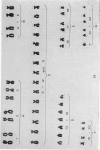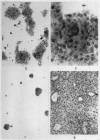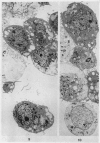Abstract
Cell cultures were made from 18 human bladder tumours. Three cell lines were maintained for seven transfer generations, but all had a “fibroblastic” morphology and a normal diploid karyotype. A fourth line has been maintained for over 80 transfer generations. This was derived from a well differentiated papillary tumour of bladder. Morphologically the light and electron microscopic structure of the cells resembled that of bladder tumours. The cells formed tumour nodules, with a similar structure, when transplanted into hamster cheek pouches. There is a stem line chromosome number of 48. Karyotypes of 60% of the stem line cells had one extra chromosome in Group C and one in Group D.
Full text
PDF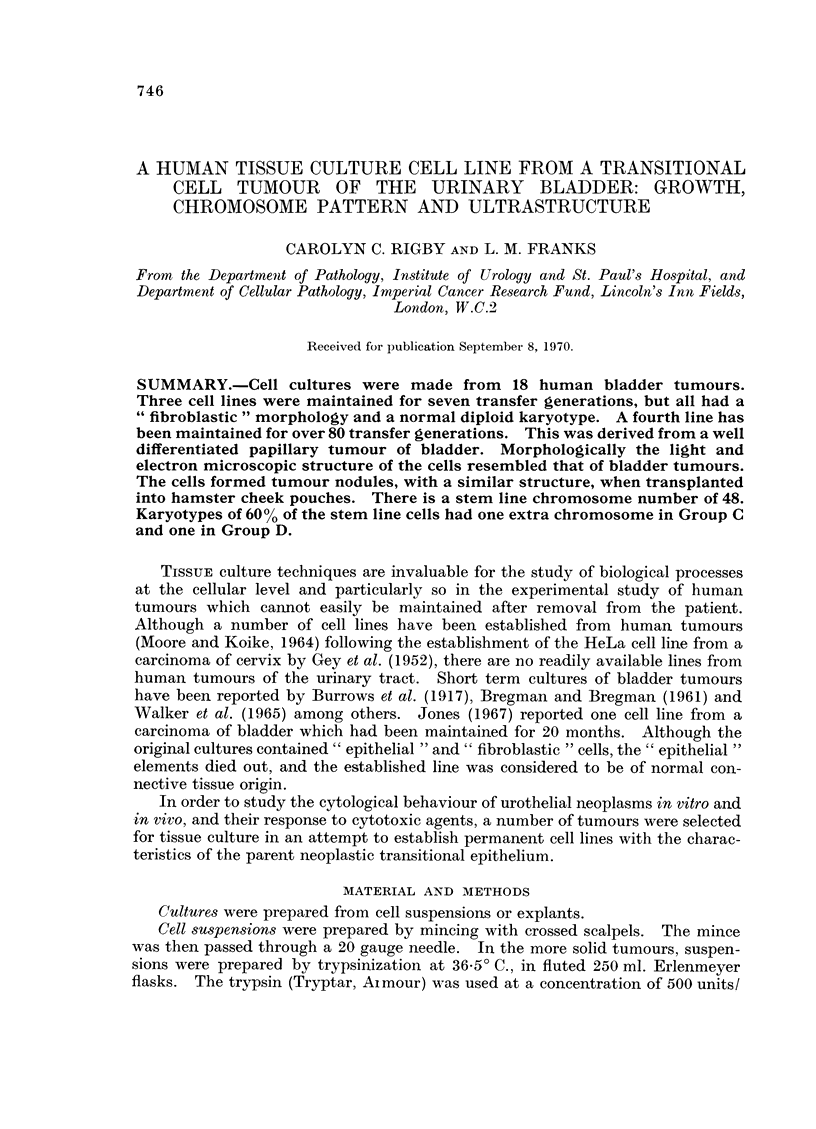
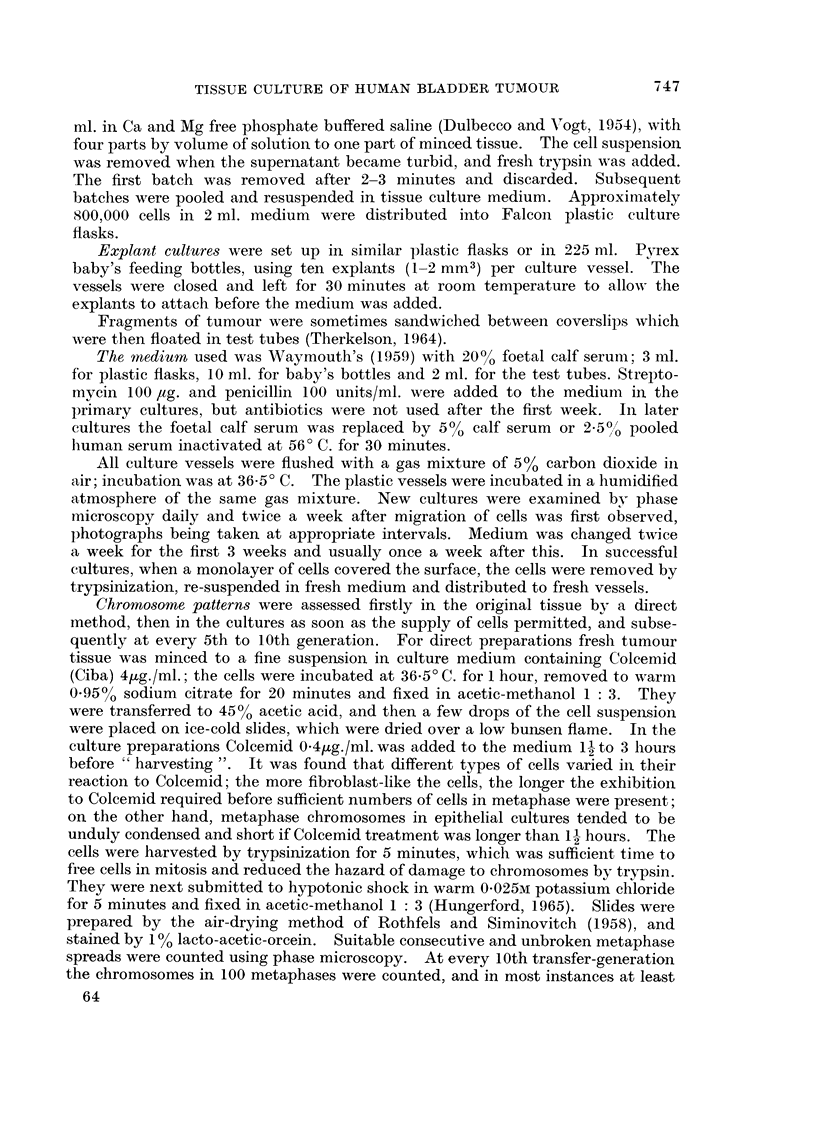
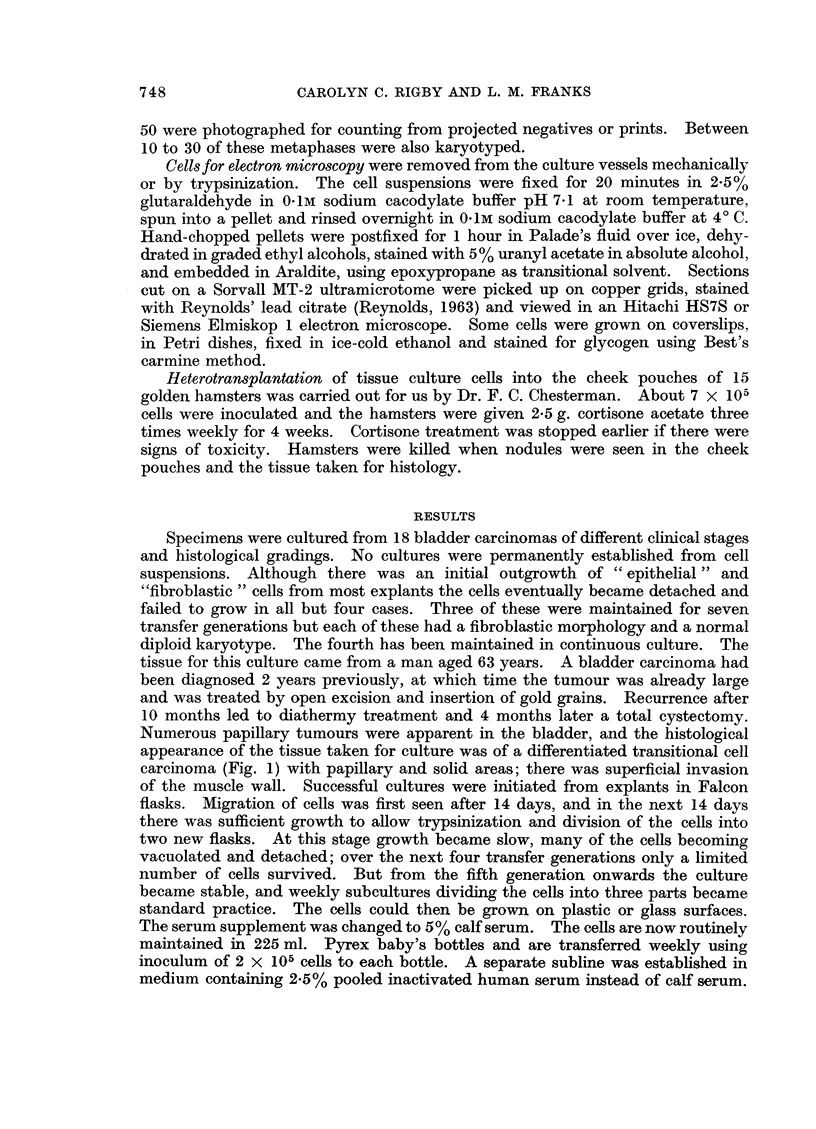
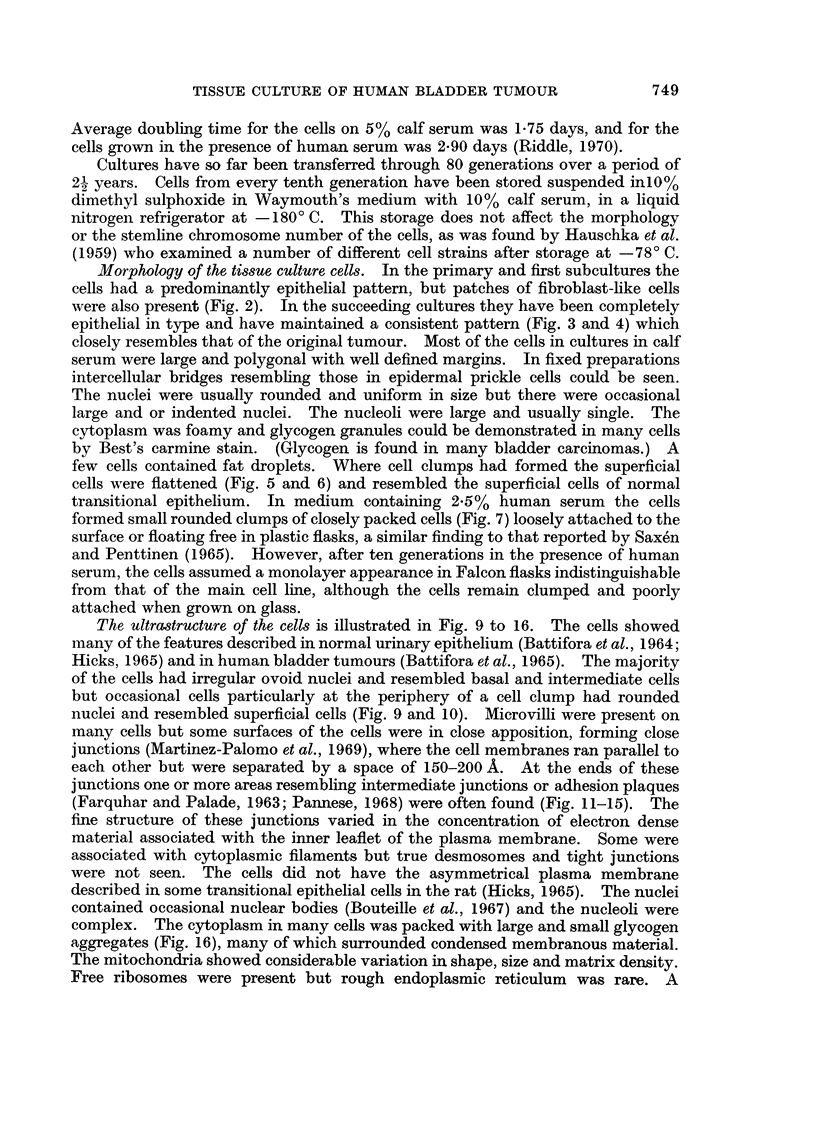
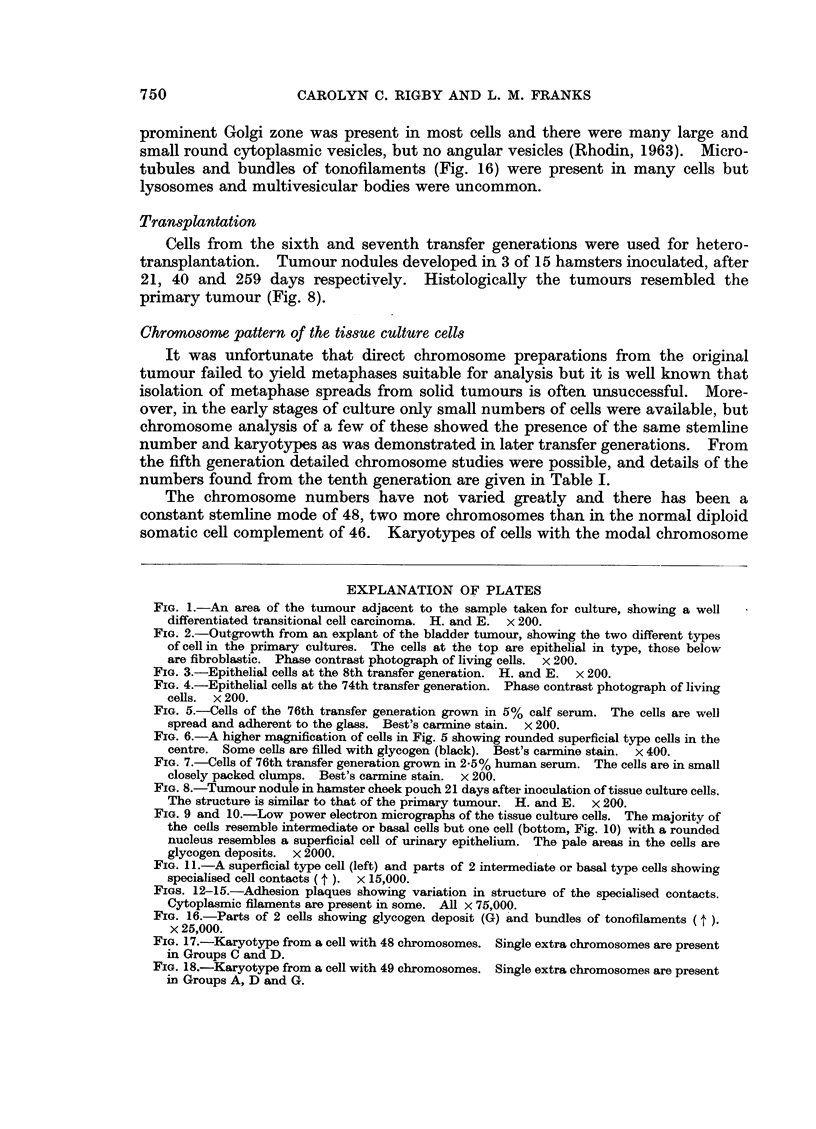
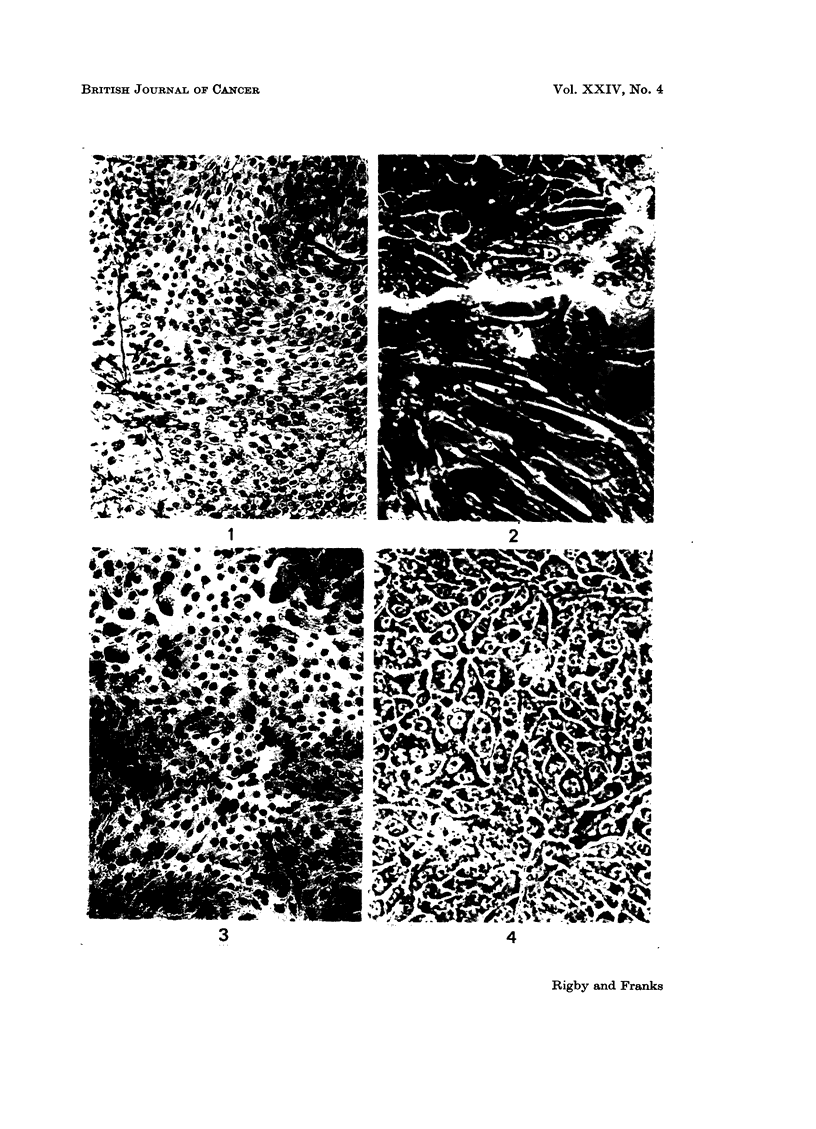

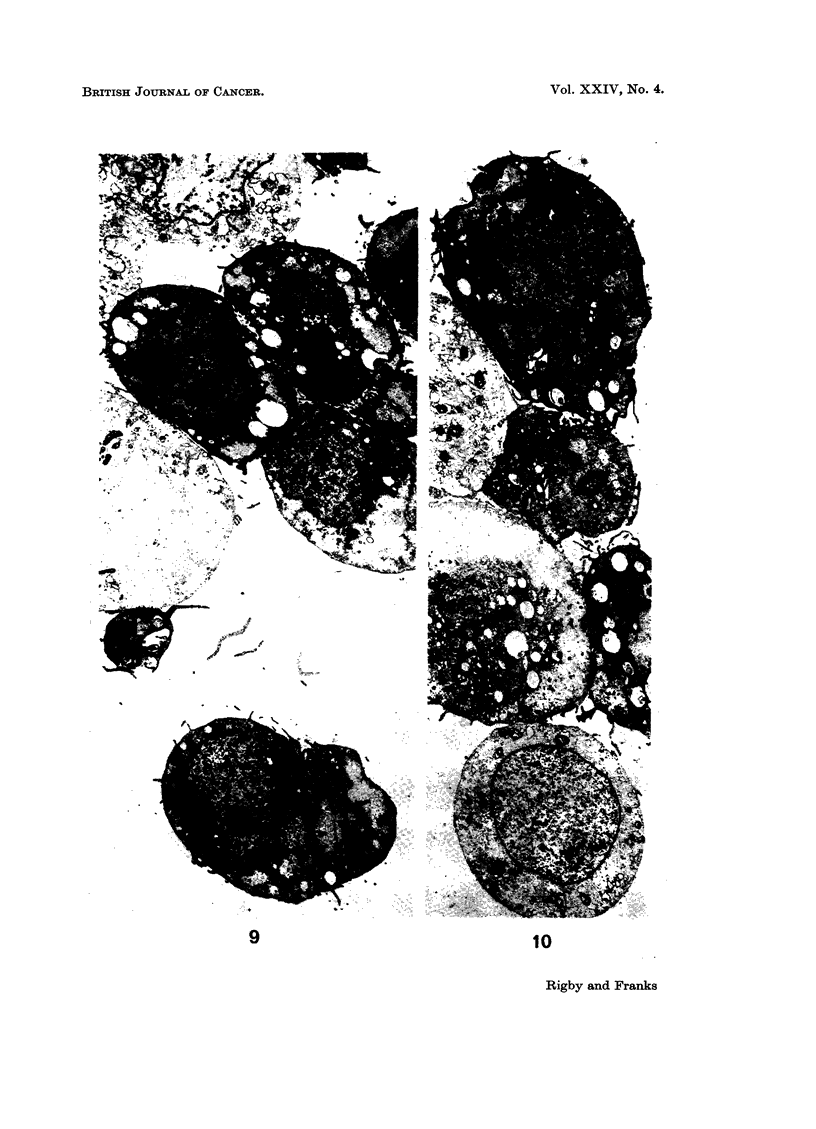
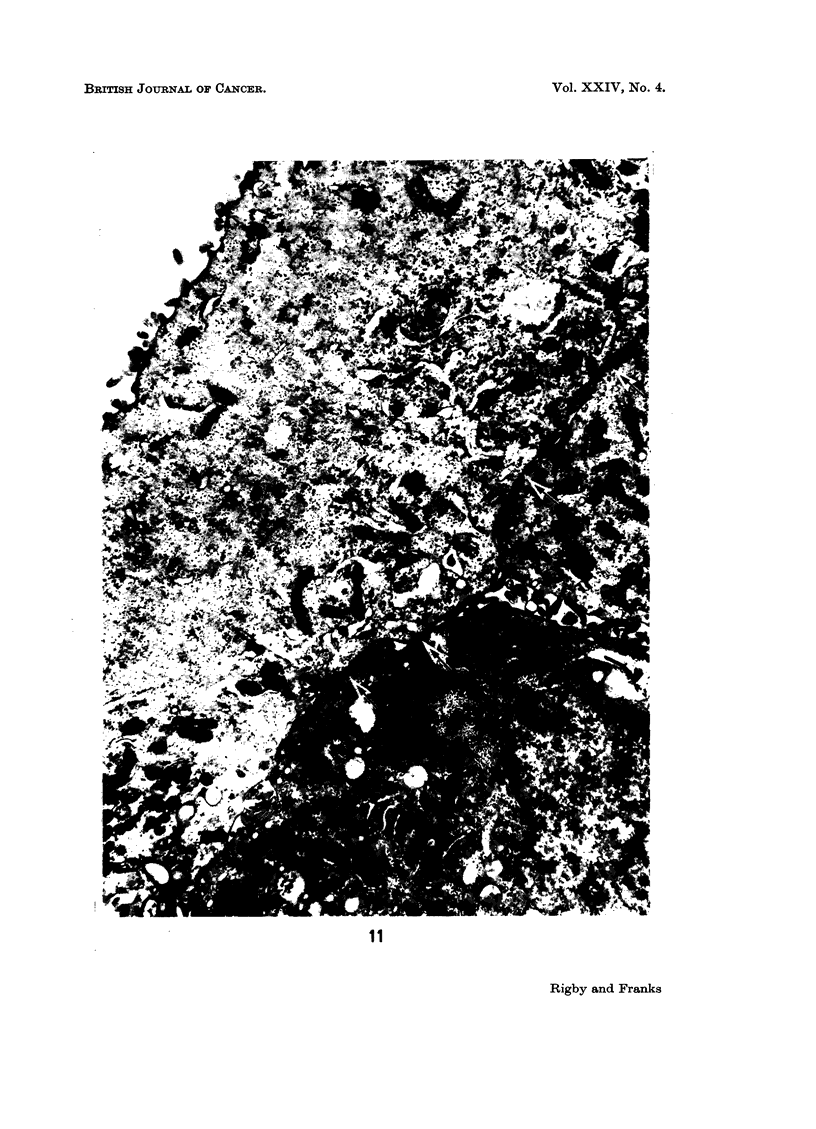
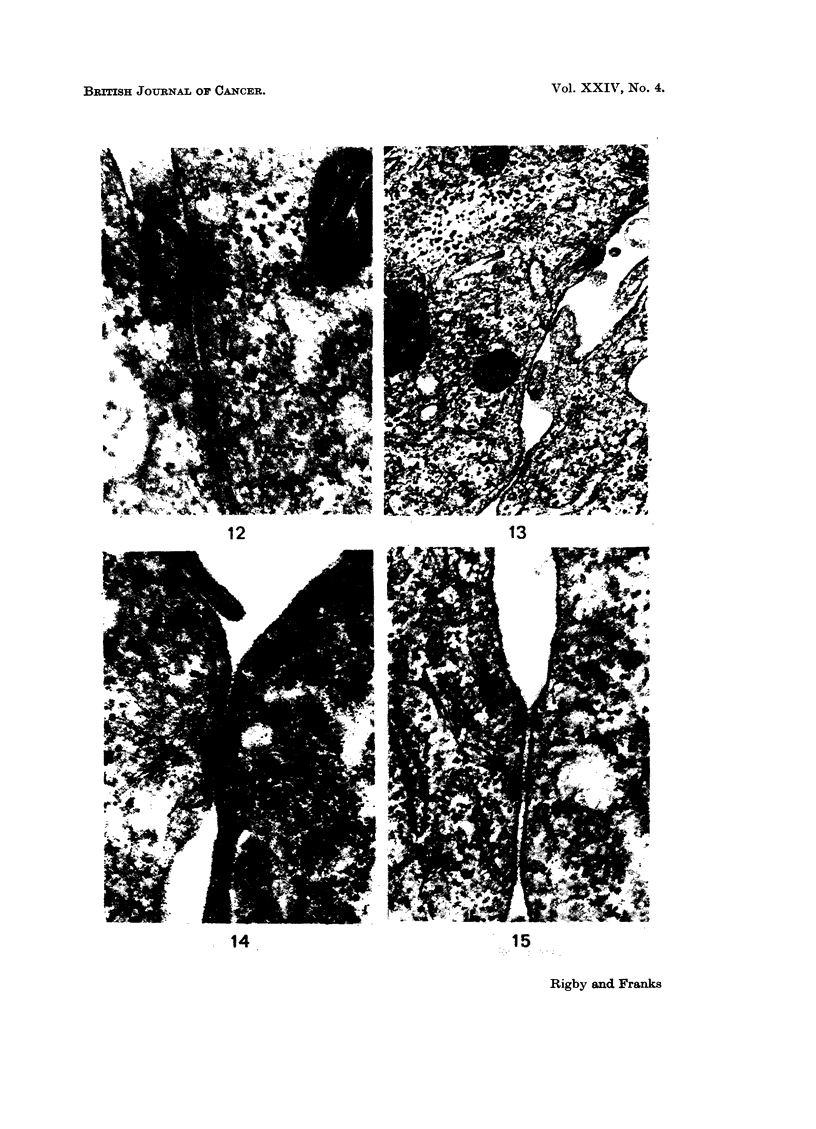
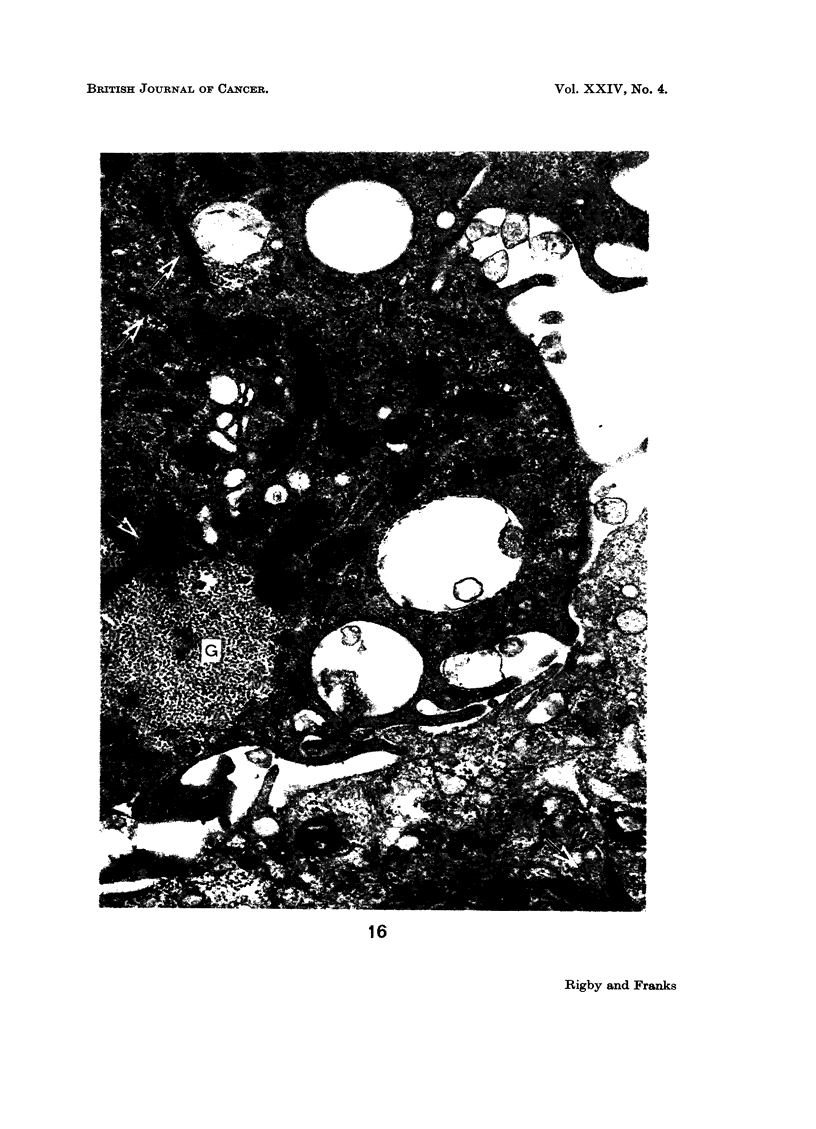
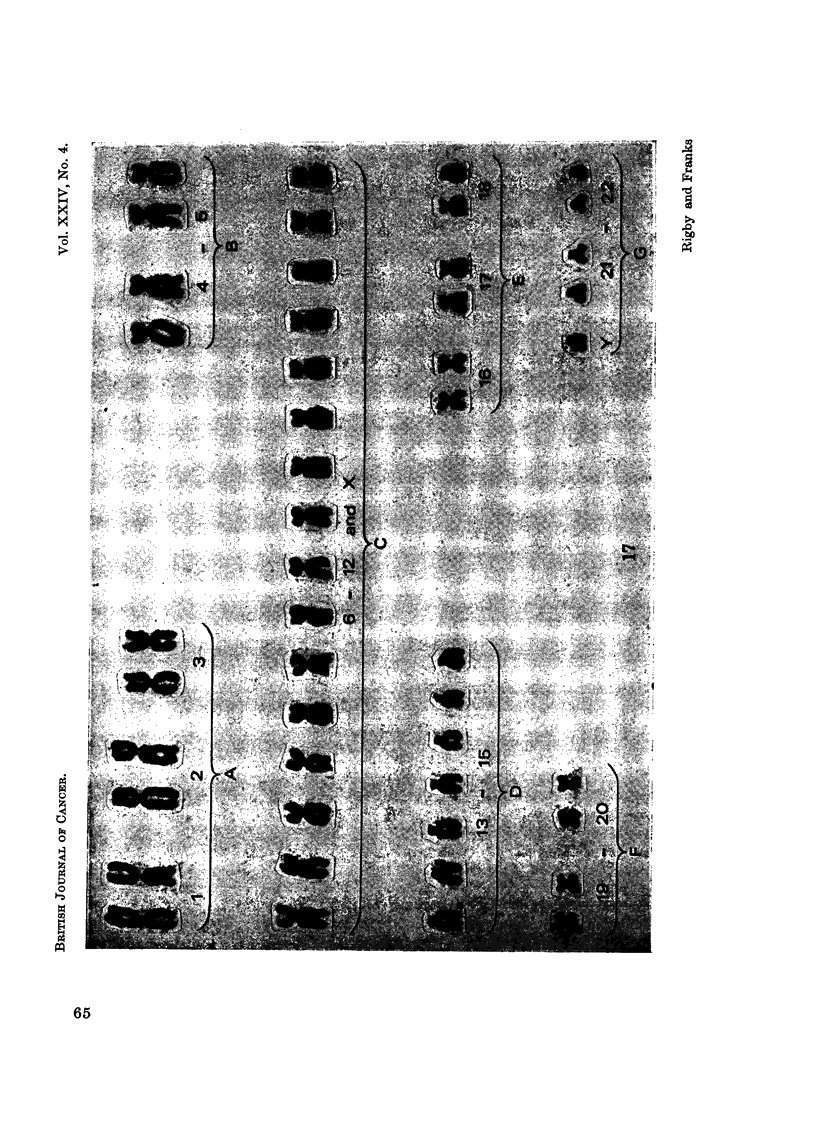
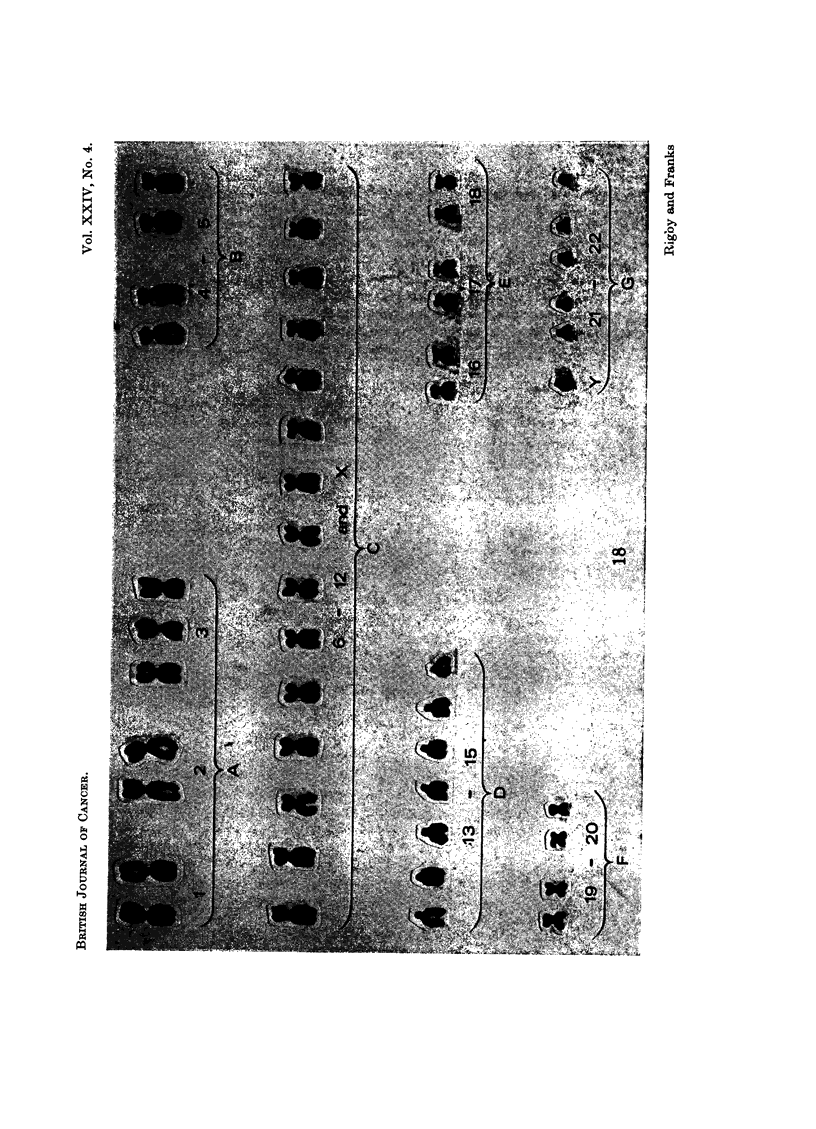
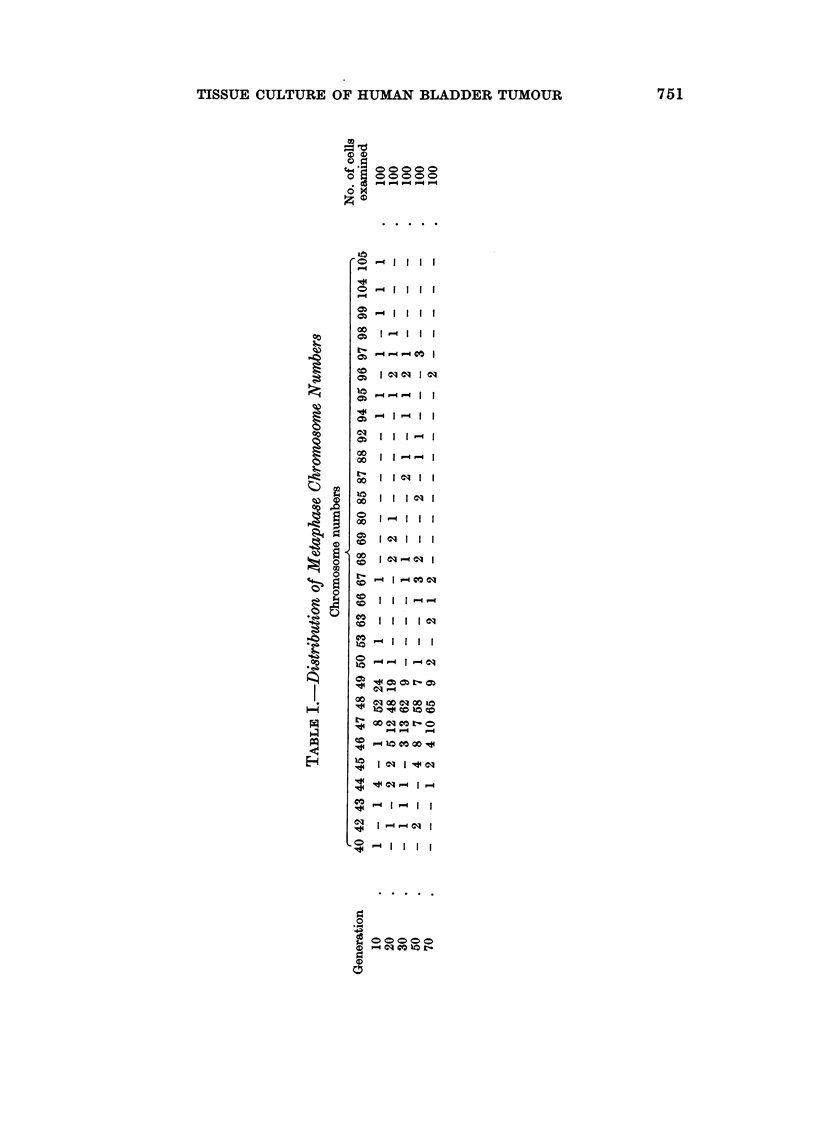
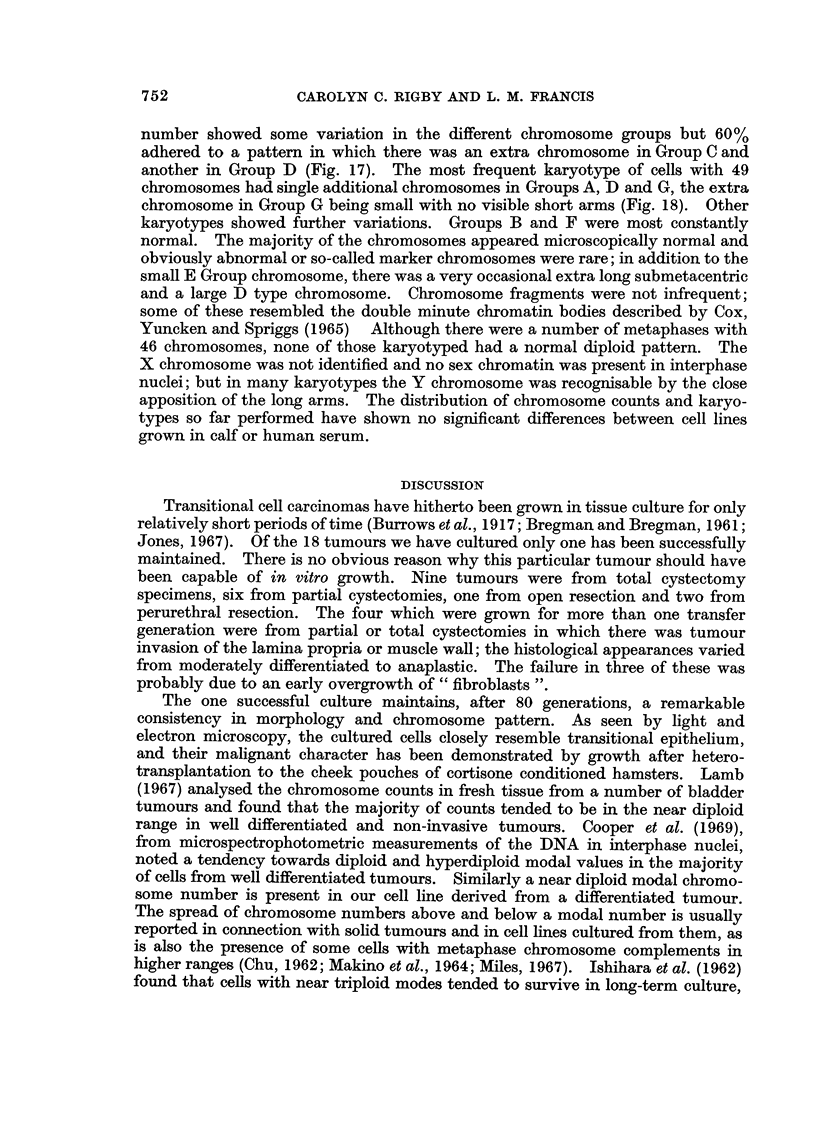
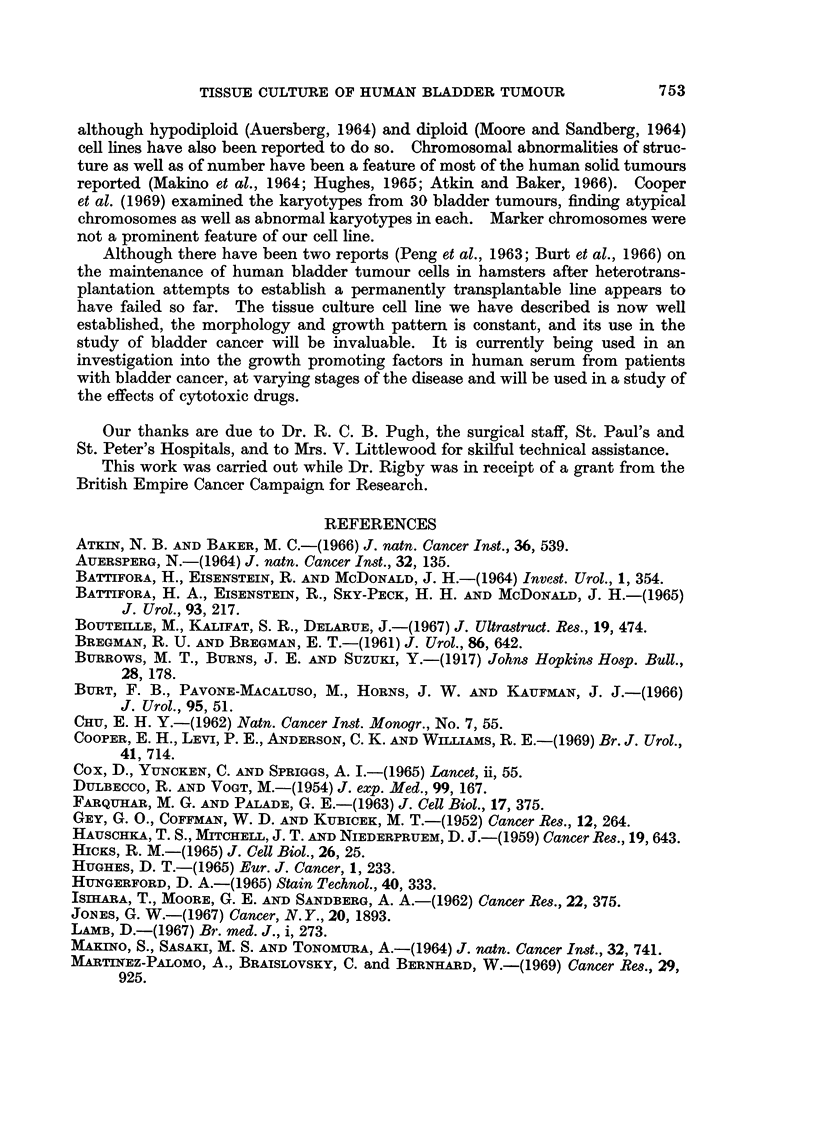
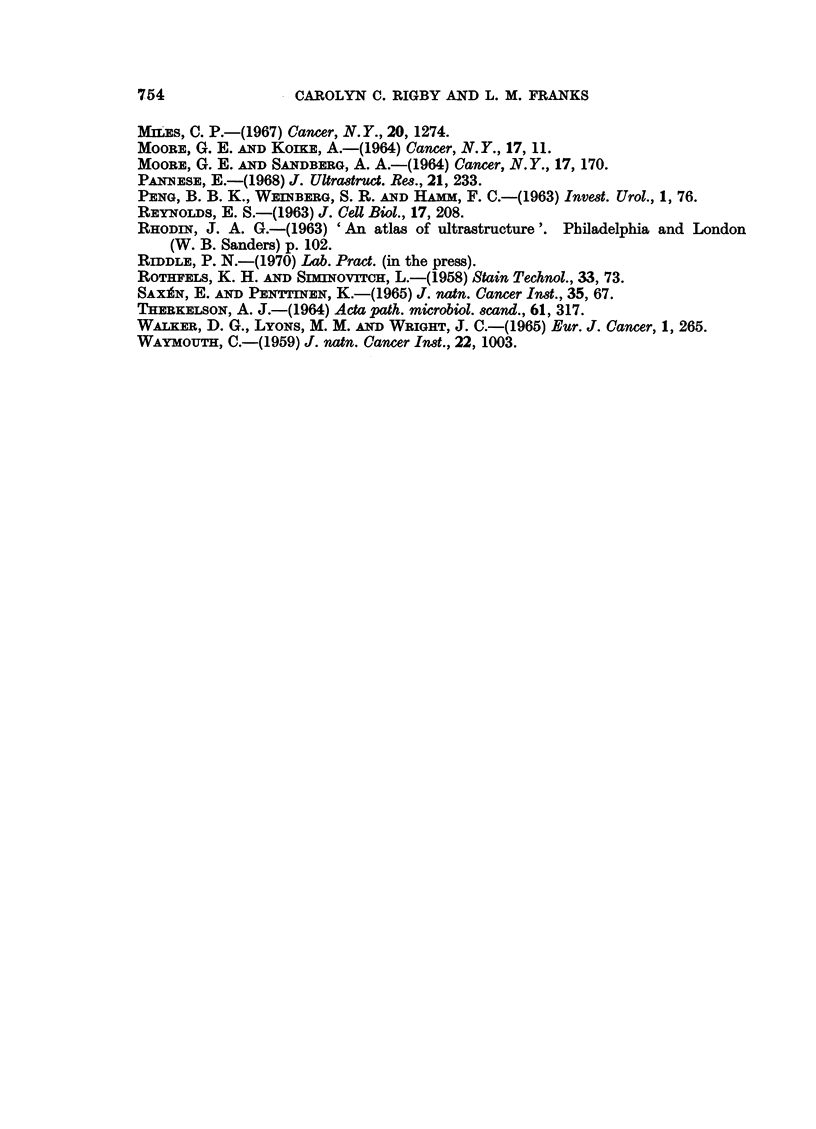
Images in this article
Selected References
These references are in PubMed. This may not be the complete list of references from this article.
- BATTIFORA H. A., EISENSTEIN R., SKY-PECK H. H., MCDONALD J. H. ELECTRON MICROSCOPY AND TRITIATED THYMIDINE IN GRADATION OF MALIGNANCY OF HUMAN BLADDER CARCINOMAS. J Urol. 1965 Feb;93:217–223. doi: 10.1016/S0022-5347(17)63749-2. [DOI] [PubMed] [Google Scholar]
- BREGMAN R. U., BREGMAN E. T. Tissue culture of benign and malignant human genitourinary tumors. J Urol. 1961 Nov;86:642–649. doi: 10.1016/S0022-5347(17)65237-6. [DOI] [PubMed] [Google Scholar]
- Cooper E. H., Levi P. E., Anderson C. K., Williams R. E. The evolution of tumour cell populations in human bladder cancer. Br J Urol. 1969 Dec;41(6):714–717. doi: 10.1111/j.1464-410x.1969.tb09983.x. [DOI] [PubMed] [Google Scholar]
- FARQUHAR M. G., PALADE G. E. Junctional complexes in various epithelia. J Cell Biol. 1963 May;17:375–412. doi: 10.1083/jcb.17.2.375. [DOI] [PMC free article] [PubMed] [Google Scholar]
- HAUSCHKA T. S., MITCHELL J. T., NIEDERPRUEM D. J. A reliable frozen tissue bank: viability and stability of 82 neoplastic and normal cell types after prolonged storage at -78 degrees C. Cancer Res. 1959 Jul;19(6 Pt 1):643–653. [PubMed] [Google Scholar]
- Hungerford D. A. Leukocytes cultured from small inocula of whole blood and the preparation of metaphase chromosomes by treatment with hypotonic KCl. Stain Technol. 1965 Nov;40(6):333–338. doi: 10.3109/10520296509116440. [DOI] [PubMed] [Google Scholar]
- Lamb D. Correlation of chromosome counts with histological appearances and prognosis in transitional-cell carcinoma of bladder. Br Med J. 1967 Feb 4;1(5535):273–277. doi: 10.1136/bmj.1.5535.273. [DOI] [PMC free article] [PubMed] [Google Scholar]
- MOORE G. E., SANDBERG A. A. STUDIES OF A HUMAN TUMOR CELL LINE WITH A DIPLOID KARYOTYPE. Cancer. 1964 Feb;17:170–175. doi: 10.1002/1097-0142(196402)17:2<170::aid-cncr2820170206>3.0.co;2-n. [DOI] [PubMed] [Google Scholar]
- REYNOLDS E. S. The use of lead citrate at high pH as an electron-opaque stain in electron microscopy. J Cell Biol. 1963 Apr;17:208–212. doi: 10.1083/jcb.17.1.208. [DOI] [PMC free article] [PubMed] [Google Scholar]
- WAYMOUTH C. Rapid proliferation of sublines of NCTC clone 929 (strain L) mouse cells in a simple chemically defined medium (MB 752/1). J Natl Cancer Inst. 1959 May;22(5):1003–1017. doi: 10.1093/jnci/22.5.1003. [DOI] [PubMed] [Google Scholar]
- Walker D. G., Lyons M. M., Wright J. C. Observations on primary short-term cultures of human tumors. A second 5-year study. Eur J Cancer. 1965 Nov;1(3):265–273. doi: 10.1016/0014-2964(65)90059-9. [DOI] [PubMed] [Google Scholar]



